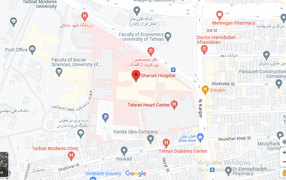Salivary antioxidant levels in pemphigus vulgaris patients compared to the healthy people
Abstract
Introduction: Pemphigus comprises a group of diseases characterized by cutaneous and mucosal blistering. Pemphigus vulgaris (PV) is the most common and important variant. Recent reports have revealed the relatively high incidence of PV in Iran. The onset or aggravation of many human diseases is attributed to oxidative stress and it has been suggested as one of the several factors responsible for etiopathogenesis of pemphigus. The present study sought to assess the association of salivary level of antioxidant enzyme glutathione peroxidase (GPx) and total antioxidant level with pemphigus vulgaris.Materials and Methods: This case-control study evaluated patients referred to Razi Dermatology Hospital in Tehran , Iran from January to November 2011. Thirty patients with early diagnosed PV, who had never been on treatment were enrolled in this study. The diagnosis of PV was confirmed by histopathology and direct immunofluorescence. The control group consisted of 30 age- and sex-matched healthy non-smoker volunteers.Saliva was collected from subjects for evaluation of glutathione peroxidase and total antioxidant levels and comparison with controls. GPX and TAS activity was analyzed by spectrophotometry . Independent samples t-test was applied to compare the means of continuous variables. Statistical analysis was performed using SPSS software. P ≤ 0.05 was considered significant.Results: The mean salivary level of glutathione peroxidase was significantly lower in pemphigus patients. No statistically significant difference was observed between the groups in total antioxidant levels of saliva.Conclusion: Our findings indicated that lower levels of glutathione peroxidase may be associated with pemphigus vulgaris. Salivary GPx level may be used for diagnosis of PV.Key words: Antioxidant, Pemphigus vulgaris, Glutathione peroxidase.



